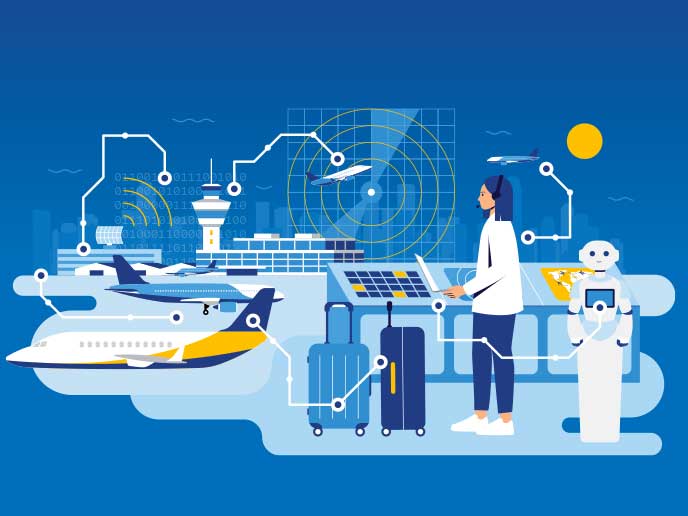Bringing intelligent and trustworthy automation to Europe’s aviation sector
Artificial intelligence (AI) has been around for more than 60 years, but has become a transformative technology in recent years thanks to exponential advances in computing power, data availability and widespread networks of devices. The industry is taking a keen interest in the potential of AI and subsets such as machine learning and deep learning, to develop intelligent maintenance, engineering and prognostics tools, applications to streamline business processes, supply chains and customer services, and more. Air traffic management (ATM) is an ideal candidate for greater automation and augmentation through AI. With their repetitive procedures generating huge amounts of data, aviation and ATM can make use of AI and higher levels of automation to improve the efficiency of their operations in many ways and allow human operators to focus on safety-critical tasks. Machine learning digital assistants can mine huge amounts of historical data to support human operators in taking the best possible decisions. Automated marketplaces can help airlines define flight allocations without revealing commercially sensitive pricing data. And a better understanding of passenger journeys can build the framework for seamless multimodal travel. Across industries, the increased use of AI brings with it serious ethical questions. Because aviation is safety-critical and human-centric, it is essential that AI solutions in this space are understandable and trustworthy. An ethical approach to AI is central to strengthening citizen trust in digital development, and to building a competitive advantage for European companies. The SESAR 3 Joint Undertaking is an institutionalised European partnership between private and public sector organisations set up to accelerate through research and innovation the delivery of the Digital European Sky. It is enabling the expansion of AI in aviation and ATM through research that builds innovative, transparent and trustworthy AI solutions that seek to support human operators. This Results Pack highlights recent advances made by 15 projects supported by EU funding through the SESAR 3 Joint Undertaking. The projects featured address all phases of flight from strategic and pre-tactical planning to tactical operations themselves. Thanks to the application of machine learning, deep learning and big data analytics, delivered through the joint support of the private and public sectors, the EU aviation industry will be able to surpass the complexity of the existing system, making it more scalable, economically sustainable, environmentally efficient and resilient. Placing the passenger at the centre of the aviation experience, IMHOTEP and TRANSIT help managers build airports into multimodal transport hubs, while AICHAIN, SIMBAD and SlotMachine seek to predict, avoid and alleviate delays. Trust in AI solutions is critical for their adoption by industry. ARTIMATION, FARO, MAHALO and TAPAS all support increased transparency and resilience within automated ATM systems. ALARM and ISOBAR help reduce disruption caused by severe weather systems and other airborne hazards. AISA and HAAWAII developed AI assistants that can support air traffic managers, while SafeOPS examined how AI input can be best integrated into their workflows. And finally, SINAPSE explored AI solutions to protect air traffic communications from cyberattack.



